First Nations Negotiator Honors Ancestors by Protecting Boreal Forest
‘Sense of responsibility’ guides Indigenous effort to build conservation economy in northern Canada
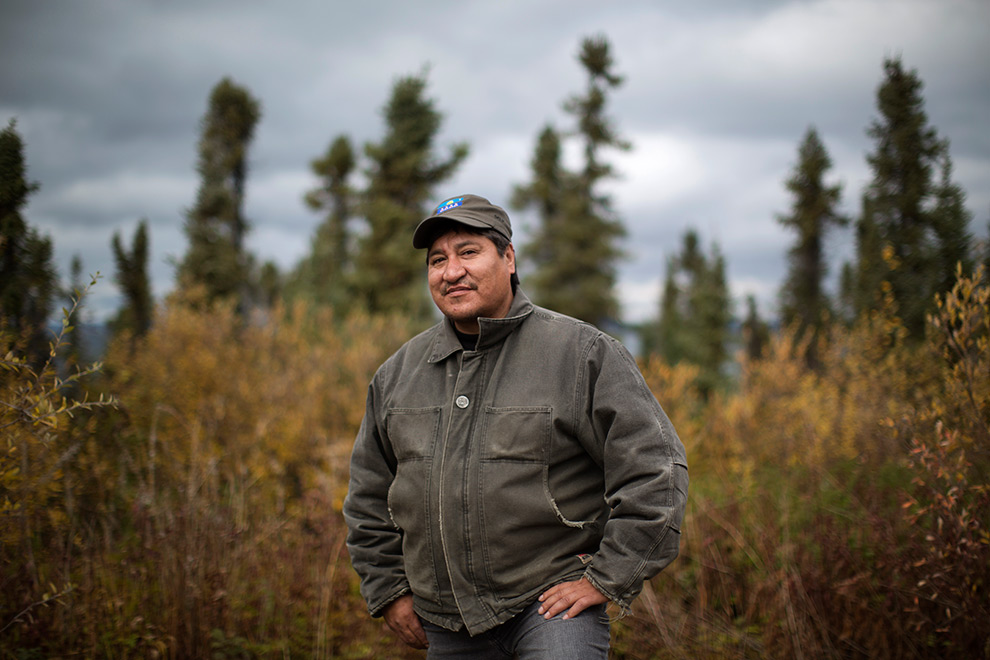
LUTSEL K’E, Northwest Territories—From the front steps of his home overlooking Great Slave Lake, Steven Nitah has an unobstructed view of his community’s future.
On the far shore of North America’s deepest lake, a vast expanse of boreal forest begins at the water’s edge and stretches undisturbed into the horizon. It is the southwestern boundary of Thaidene Nene National Park Reserve, a soon-to-be-created 3.5 million-acre protected area on the homeland of the Lutsel K’e Dene First Nation in Canada’s Northwest Territories.
Across another wide channel in the lake to the west, Nitah can see the edge of an adjacent territorial park that will sprawl across an additional 2.9 million acres of intact wilderness.
Lutsel K’e, an Indigenous village of 350 people, is the gateway to both places, and its people’s desire to protect them has been the catalyst for their creation.
“The vision for Thaidene Nene is for that land to stay [undeveloped], for the ecosystem to be able to survive and sustain our people here going into the future,” says Nitah, chief negotiator for the community, which is located about 115 miles east of Yellowknife, the capital city of the Northwest Territories.
Nitah says the new parks will give the Lutsel K’e Dene comfort, knowing there's going to be land that's going to be unspoiled. “Future generations can continue their relationship with the land—with the land of our ancestors, which is what Thaidene Nene means.”
The boundaries for these two parks—combined, they are larger than Vermont—were set in the summer of 2015, after decades of talks between the governments of Canada, the Northwest Territories, and the Lutsel K’e Dene. Nitah, a former territorial legislator and chief of the Lutsel K’e Dene, was in the thick of negotiations.
At stake is the conservation of a region that has enormous ecological and cultural importance to the Lutsel K’e Dene First Nation. The area is also one that is rich with natural resources that help power the Canadian economy and are in growing demand in the United States and around the world.
“Just between here and Yellowknife, you have rare earth. You have copper. You have beryllium. You have all kinds of other minerals,” Nitah says.
“Between here and Fort Reliance [to the northeast of Lutsel K’e] is more copper and lead zinc. You’ve got uranium. You’ve got four operating diamond mines that are world-class. ... So there's lots of potential for development up here.”
The area’s resources bring welcome employment prospects for the people of Lutsel K’e, although Indigenous communities have, in the past, been excluded from many opportunities.
One of Nitah’s responsibilities is negotiating impact benefit agreements with mining companies that are aimed at bringing jobs, training, and contracts to the community.
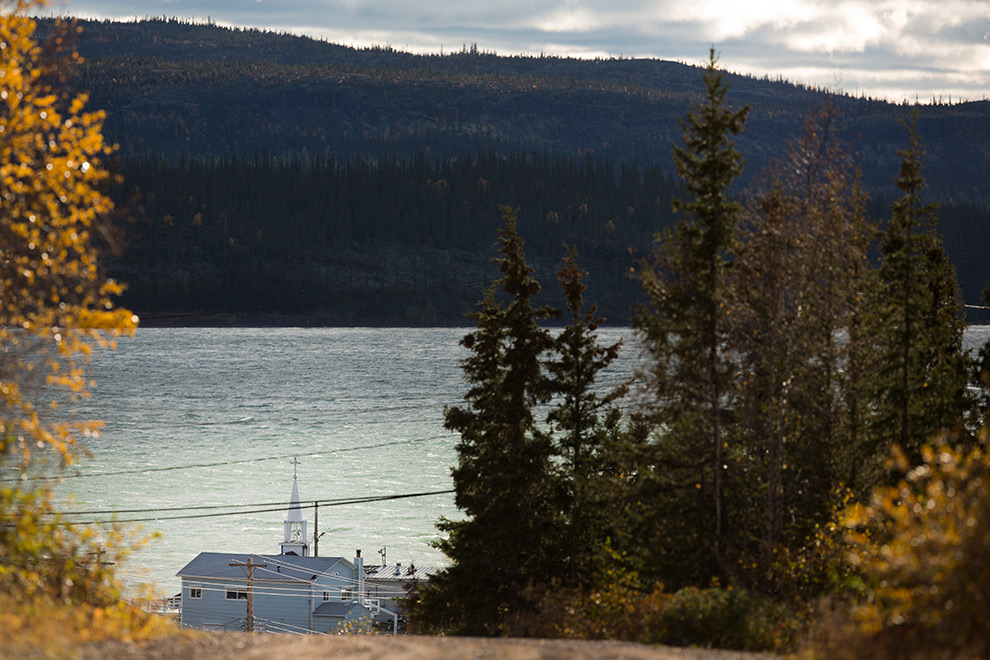
The agreement reached on the park boundaries for Thaidene Nene and the neighboring territorial park marks a triumph for the Lutsel K’e Dene, who have confronted dramatic changes to their traditional lifestyle as the “digging rush” for resources has accelerated.
The amount of land that will ultimately be protected under the agreement with Canada and the Northwest Territories was smaller than Lutsel K’e had initially sought but still about four times larger than what the federal and territorial governments first proposed.
“It's been a process. And it's been challenging at times, but it has been great fun. We really had to negotiate to get as much land under protection as possible. … It is a victory in a lot of ways for us,” Nitah says.
"Thaidene Nene, which means 'Land of the Ancestors' in the Chipewyan language, is part of the largest roadless landscape in North America."
“Protection of land is not something public governments like to do, especially in an area like this, where they view the Northwest Territories as the breadbasket … in terms of resource development and opportunities.”
The creation of Thaidene Nene as a park reserve “allows us to think a little bit more open-mindedly about development outside of Thaidene Nene” because the areas with the most spiritual, ecological, and cultural importance will be off-limits to development, Nitah says.
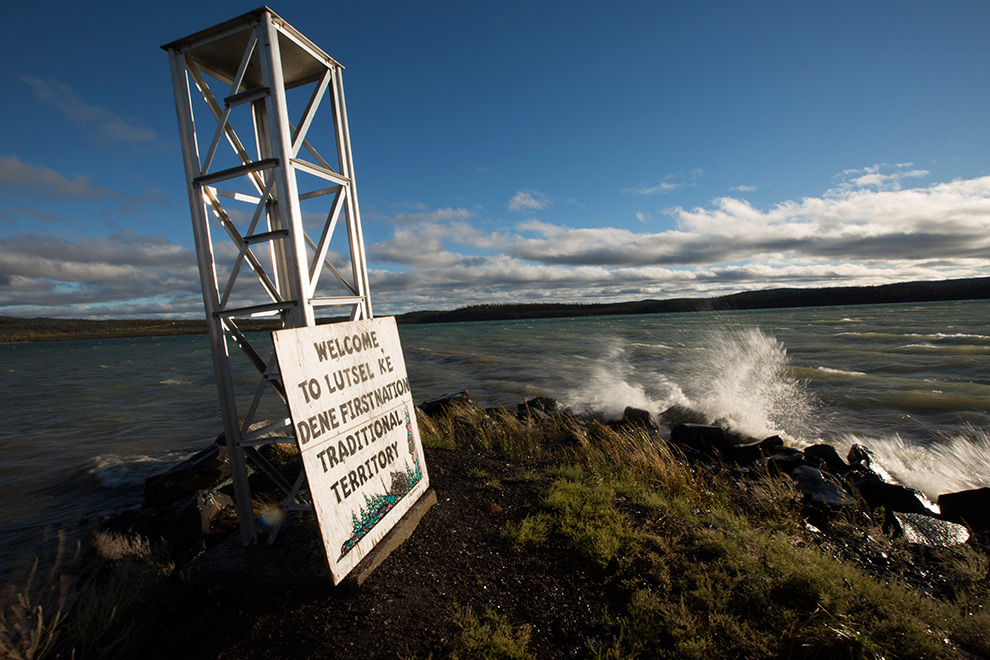
The land and the challenges it poses give strength to the people, and the people have done some wondrous things in the North. Steven Nitah
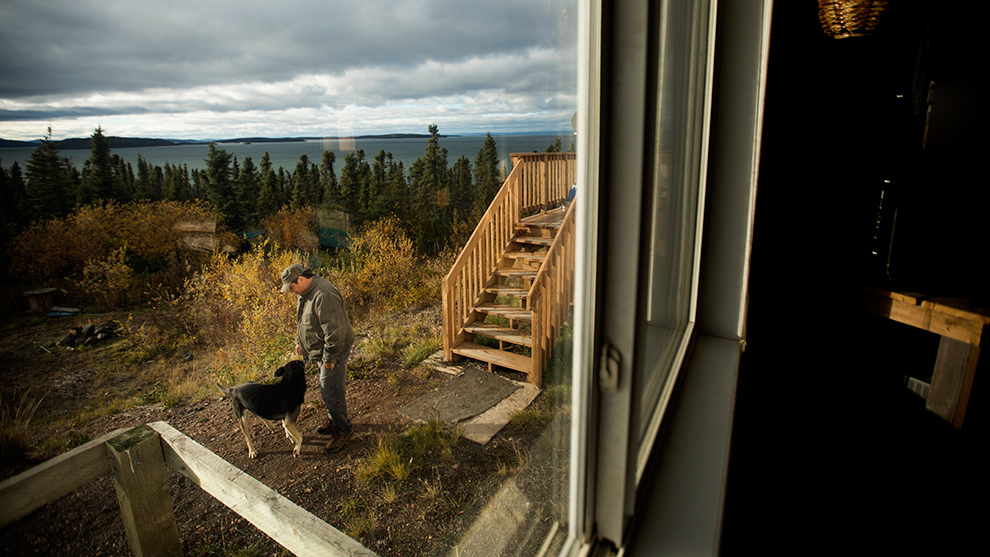
“It is a resource-extractive economy up here. … [But] we want to bring tourists in to try to create a balance, by way of a conservation economy.”
The community believes Thaidene Nene will attract visitors, in part, because of its ecological diversity. It’s in the transition zone between boreal forest and tundra, an area that provides vital habitat for wildlife including moose, musk oxen, songbirds, bears, and wolves. Large herds of barren-ground caribou migrate through the territory. The east arm of Great Slave Lake is world-renowned for trophy pike, lake trout, and Arctic grayling fishing.
It’s also a place of sacred legends, such as the story of the Lady of the Falls, or Ts’akui Theda. Alongside a waterfall deep in the wilderness, an elderly Dene woman was said to have been instructed by the Creator to sit down and rest until the end of time. She would stay there to protect the people as long as she remained undisturbed. The Lutsel K’e Dene make summer pilgrimages to the Lady of the Falls when they are seeking spiritual, physical, and emotional help.
“To this day, we’ve been protecting her from industrial development,” Nitah says. “To a large extent, Thaidene Nene was her creation. It sprung from the desire to protect her.”
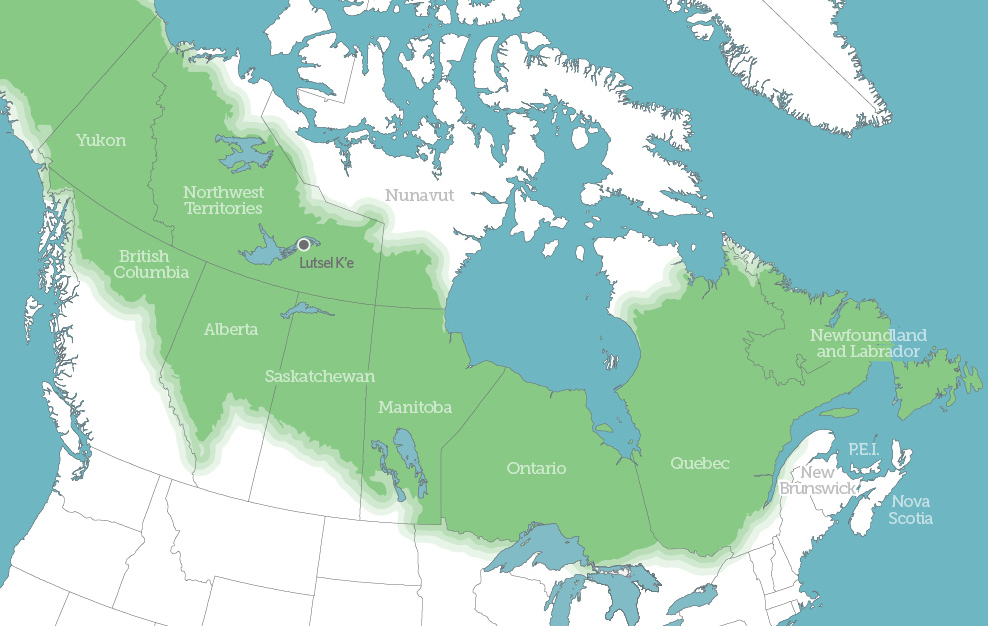 © 2015 The Pew Charitable Trusts
© 2015 The Pew Charitable TrustsCanada's Boreal Forest
Lutsel K’e, Northwest Territories is the gateway to two proposed parks covering 6.4 million acres in Canada’s boreal forest region.
Thaidene Nene is hailed as a new model for national parks in Canada, one that recognizes the authority of the people who have been its stewards for millennia, as well as the importance of traditional knowledge in keeping the land healthy.
The Lutsel K’e Dene First Nation will co-manage Thaidene Nene with Parks Canada, the federal agency that operates Canada’s national parks.
The First Nation has established a trust fund to help develop ecotourism infrastructure and support education for young community members in key fields such as environmental monitoring and resource management. Dene stewardship traditions would be a foundation of the training.
“We'll have staff on the ground working for First Nations, working with Parks Canada in implementing the plan we create together,” Nitah says.
A planned “Watchers of the Land” program will employ band members as stewards to protect the ecological and cultural integrity of sacred Dene sites and provide tours for visitors that focus on cultural and scientific knowledge.
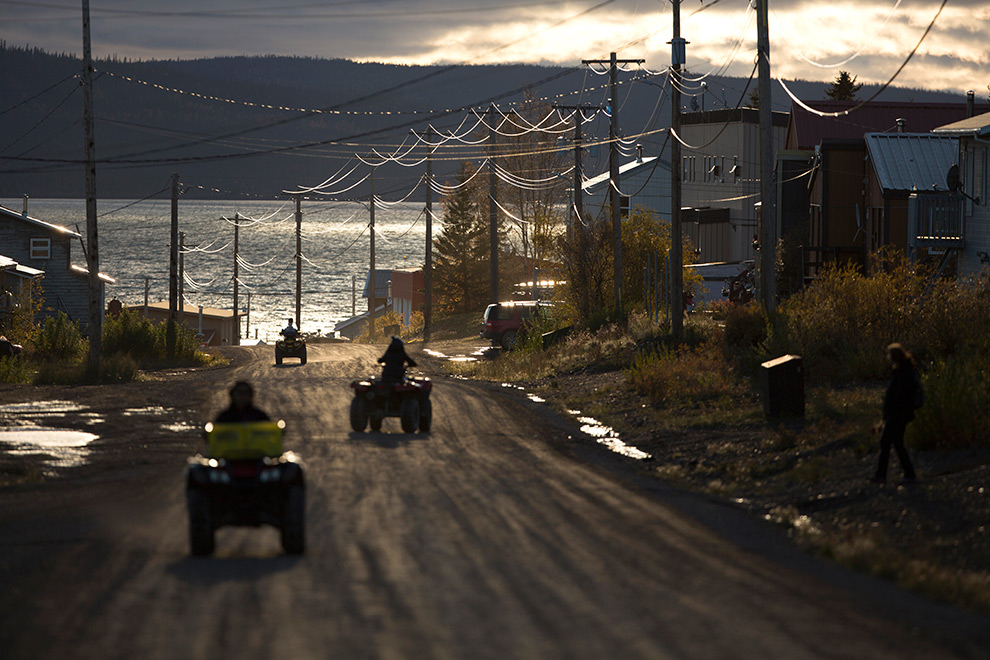
“It's our hope that [the park] is going to become an economic driver. [Not] only that—it's a way to incorporate our culture and our language into the economy so that future generations can use the culture and use the language,” Nitah says.
The Lutsel K’e Dene expect to attract about 1,000 visitors a year to Thaidene Nene when the park opens, enough to provide a much-needed economic boost to the village. Currently, the community is served by only one grocery store and a bed-and-breakfast run by the same company. There are no restaurants.
“Working on Thaidene Nene was a special thing for me. I've worked with, and lived with, many elders who created the vision of Thaidene Nene for us. And many of those [people] have passed on,” Nitah says.
“So the ability for me to work with my community and my team to reach a successful conclusion to the creation of Thaidene Nene means a great deal, and it's very special. It's allowed me to fulfill a mandate given by the people to protect a part of a homeland that sustained me personally as a kid growing up.”
Raised by his grandparents and great-grandparents, Nitah remembers spending weeks traveling deep into the boreal forest during late fall and early spring to check traplines for muskrat and beaver. Summers brought long treks north of the tree line into the Arctic tundra, on community hunts for caribou and musk oxen.
Dene families would rotate areas in which they hunted, trapped, and fished from year to year—a traditional way of ensuring that areas would not be overused and depleted of wildlife.
“This is my homeland. This is where my ancestors have always lived. Our whole living memory speaks about being in this area,” Nitah says.
“The land is what gives us our identity as to who we are as a people, and the land is what nourishes us. In a sense, it’s our fridge and our pillow. If you don’t take care of your fridge and pillow, you’re going to go cold and hungry very quickly.”
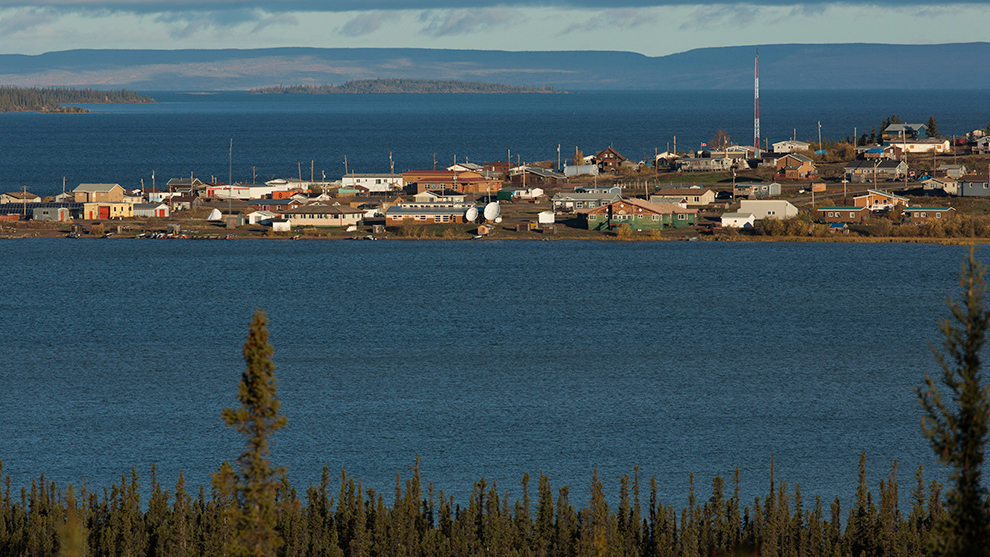
The traditional homeland of the Lutsel K’e Dene extends about 125 miles on either side of the tree line in the Northwest Territories. The present village of Lutsel K’e, which was originally called Snowdrift, was established about 60 years ago. It is serviced by daily flights that bring food supplies, mail, and other goods. Building materials, vehicles, and other large items arrive once a year by barge across the lake.
Even though their traditional lifestyle has changed over time, the Dene still depend on the land for sustenance.
“Instead of planning on a two-week hunting trip into the barren lands, we take a three- or four-day snowmobile trip. The tools and technology have changed, but the use of the land and the dependency on the land is still the same.”
As important as creating Thaidene Nene is to the lives of people in Lutsel K’e, Nitah also takes pride in knowing that the park is part of a bigger effort to protect the boreal forest as a whole.
At more than 1.2 billion acres in size, the boreal is one of the largest mostly intact, continental-scale ecosystems remaining on the planet. It stores twice as much carbon as tropical forests, providing a key buffer against the impact of climate change.
“Lutsel K’e is very happy to protect our neck of the boreal forest,” he says.
Nitah never doubted that Lutsel K’e would be up to the challenge of creating a vast protected area that is managed by the Dene according to their cultural practices and knowledge of the land.
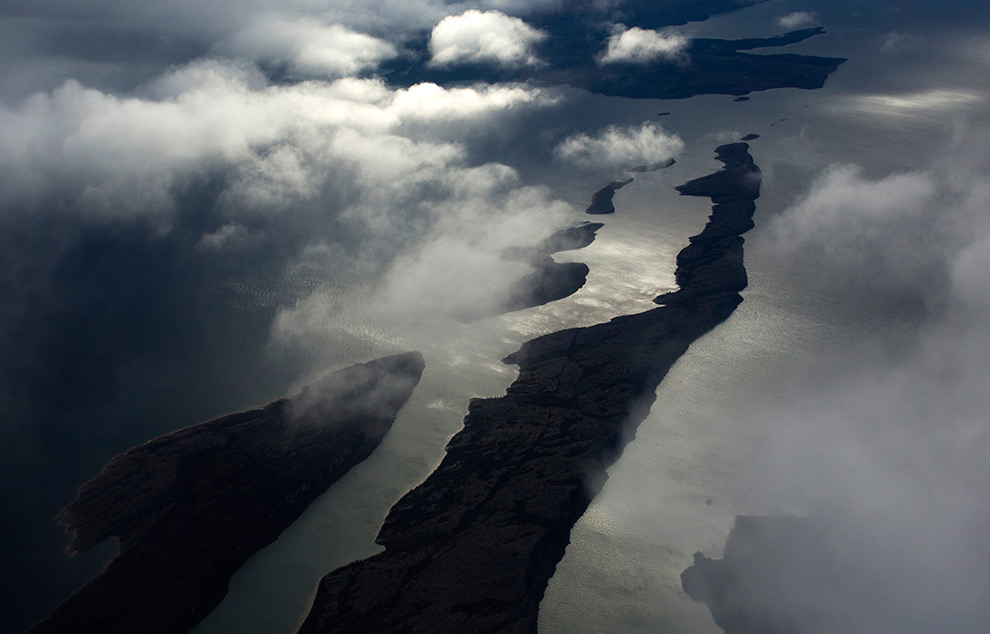
Indigenous people in the boreal region of northern Canada have survived for generations in a forbidding climate with long, dark, cold winters. Travel between communities can take days because few roads connect towns and villages.
Yet he never feels isolated in this area, Nitah says, because he knows the land and knows he can survive comfortably on it.
"The land and the challenges it poses give strength to the people, and the people have done some wondrous things in the North,” Nitah says. “The environment—the vastness of it—kind of feeds the mentality of the people. If you want to do anything, you’ve got to do it in a big way to get it done. … Thaidene Nene is a good example of that."
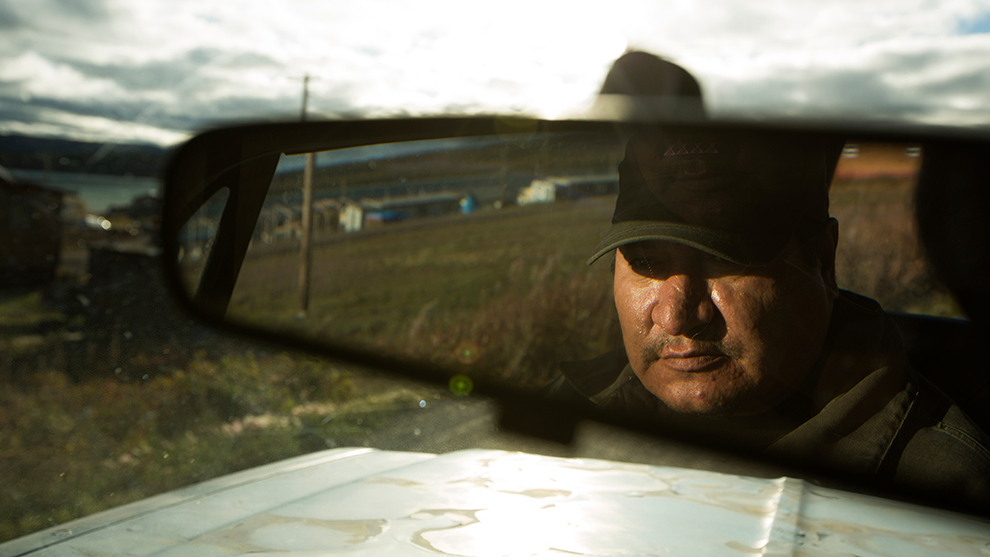
It's our hope that [the park] is going to become an economic driver. Not only that—it's a way to incorporate our culture and our language into the economy so that future generations can use the culture and use the language. Steven Nitah
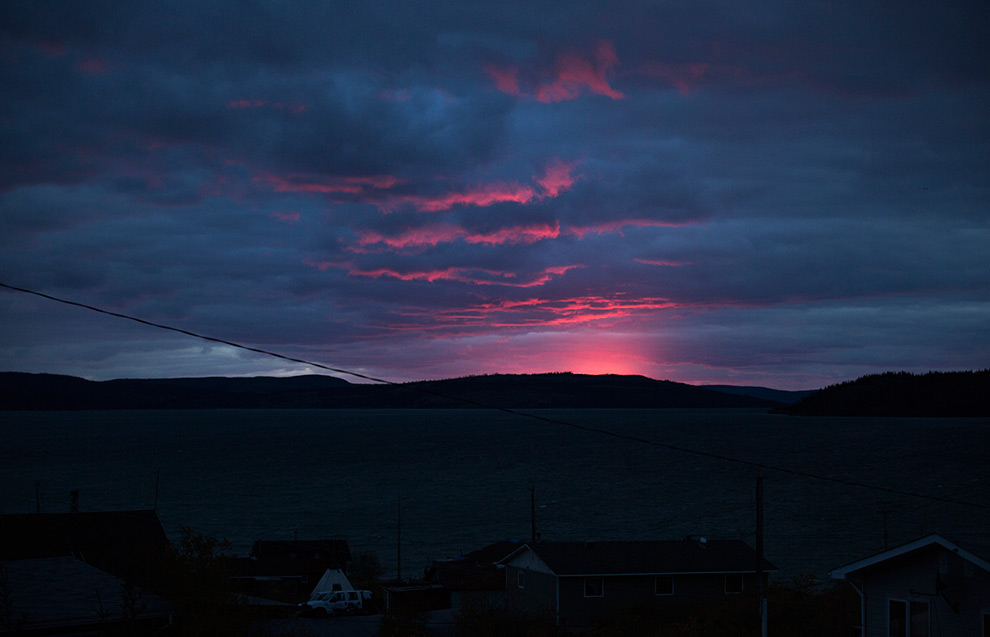
Photos by The Pew Charitable Trusts.
Fast Facts
-
350The population of Lutsel K'e, located in the easternmost community in Canada’s Northwest Territories.
-
3.5 million acresThe size of the proposed Thaidene Nene National Park Reserve. . It will be co-managed by the Lutsel K’e Dene First Nation and Parks Canada.
-
2.9 million acresThe size of an adjoining territorial park.








